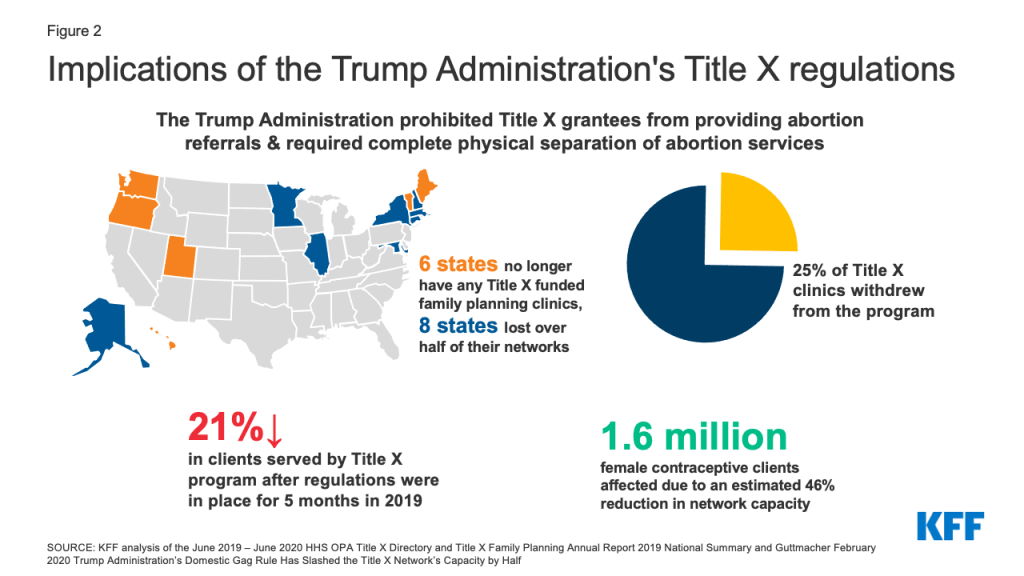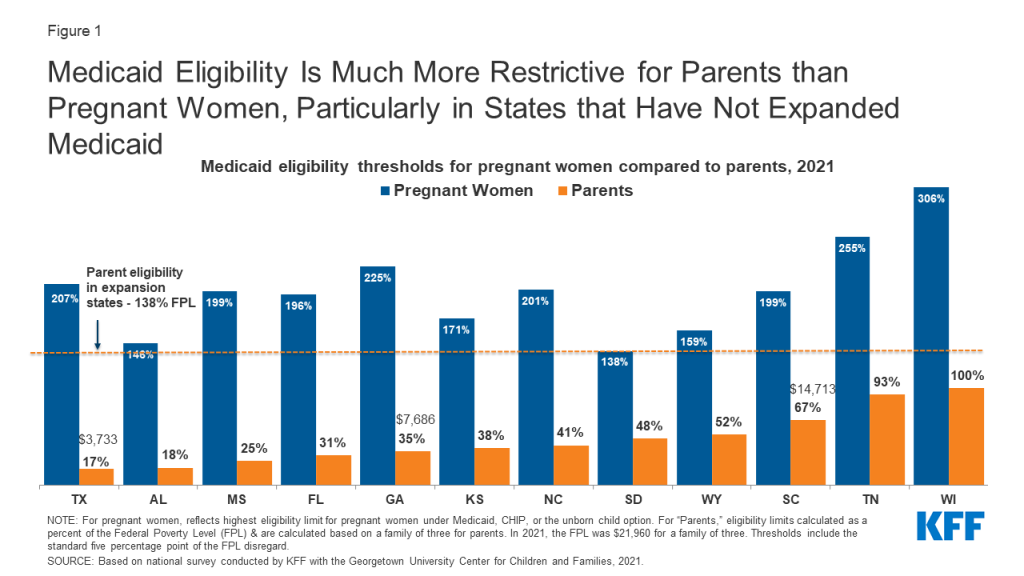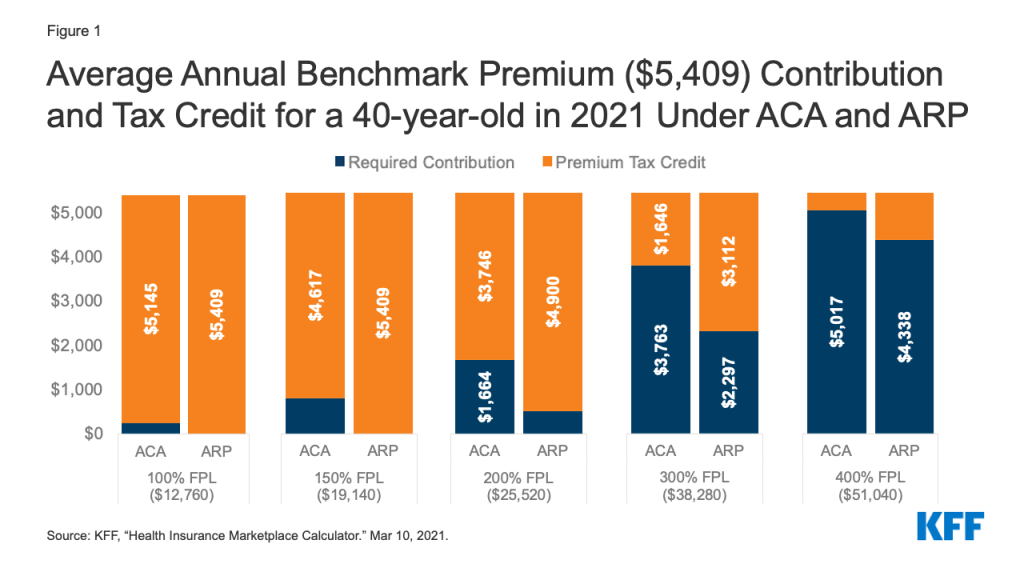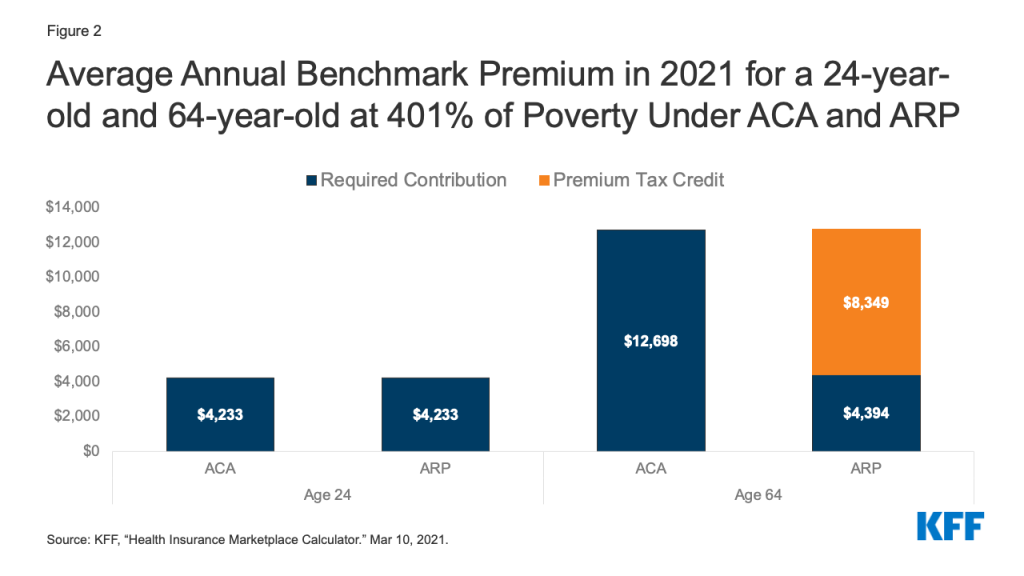Global Funding Across U.S. COVID-19 Supplemental Funding Bills
The U.S. thus far has enacted six emergency supplemental funding bills, five of which were enacted in 2020 and one which was enacted in 2021, to address the COVID-19 pandemic:
- the Coronavirus Preparedness and Response Supplemental Appropriations Act (P.L. 116-123) enacted on March 6, 2020;
- the Families First Supplemental Appropriations Act (P.L. 116-127) enacted on March 18, 2020;
- the Coronavirus Aid, Relief, and Economic Security (CARES) Act (P.L. 116-136) enacted on March 27, 2020;
- the Paycheck Protection Program and Health Care Enhancement Act (P.L.116-139) enacted on April 24, 2020;
- the Coronavirus Response and Relief Supplemental Appropriations Act, 2021 (P.L. 116-260) enacted on December 27, 2020; and
- the American Rescue Plan Act of 2021 (P.L. 117-2) enacted on March 11, 2021.
While most of the funding in these bills has been for the domestic response, approximately $19 billion has been appropriated for global efforts, provided in four of the six bills – the Coronavirus Preparedness and Response Supplemental, the CARES Act, the Coronavirus Response and Relief Supplemental Appropriations Act, 2021, and the American Rescue Plan Act of 2021. The most recent bill, the American Rescue Plan Act, includes the most funding for the global response to date ($11.6 billion). The funding in these bills support the operations of U.S. agencies in other countries, including for repatriation of U.S. personnel, and funding provided directly to affected countries and international efforts. This data note tracks appropriations designated for international efforts in the emergency bills. It will be updated as needed.
Table 1 provides a list of the agencies and funding amounts specified for international efforts across each bill. Table 2 provides more details on this funding, including the expenditure period and a description of specific activities.
| Table 1: Global Funding In Coronavirus Supplemental Bills – Summary Table | |||||||
| Agency/Department/Account | Supplemental #1: Coronavirus Preparedness and Response Supplemental Appropriations Act (P.L. 116-123) | Supplemental #2: Families First Supplemental Appropriations Act (P.L. 116-127) | Supplemental #3: Coronavirus Aid, Relief, and Economic Security (CARES) Act (P.L. 116-136) | Supplemental #4: Paycheck Protection Program and Health Care Enhancement Act (P.L.116-139) | Supplemental #5: FY2021 Omnibus and COVID Relief and Response Act (P.L. 116-260) | Supplemental #6: American Rescue Plan Act of 2021 (P.L. 117-2) | Total Funding Across All Bills |
| Total Funding | Total Funding | Total Funding | Total Funding | Total Funding | Total Funding | ||
| STATE/USAID | $1,250,000,000 | – | $1,041,000,000 | – | $4,300,000,000 | $10,000,000,000 | $16,591,000,000 |
| Department of State * | $264,000,000 | – | $678,000,000 | – | $300,000,000 | $5,584,000,000 | $6,826,000,000 |
| Consular and Border Security Programs | – | – | – | – | $300,000,000 | – | $300,000,000 |
| Diplomatic Programs | $264,000,000 | – | $324,000,000 | – | – | $204,000,000 | $792,000,000 |
| Emergencies in the Diplomatic and Consular Services | – | – | $4,000,000 | – | – | – | $4,000,000 |
| Economic Support Fund (ESF) | – | – | – | – | – | $4,300,000,000 | $4,300,000,000 |
| of which HIV/AIDS | – | – | – | – | – | $3,750,000,000 | $3,750,000,000 |
| HIV/AIDS (bilateral) | – | – | – | – | – | $250,000,000 | $250,000,000 |
| Global Fund | – | – | – | – | – | $3,500,000,000 | $3,500,000,000 |
| of which economic & stabilization support ** | – | – | – | – | – | $550,000,000 | $550,000,000 |
| International Organizations & Programs (IO&P) | – | – | – | $580,000,000 | $580,000,000 | ||
| Migration and Refugee Assistance | – | – | $350,000,000 | – | – | $500,000,000 | $850,000,000 |
| USAID * | $736,000,000 | – | $353,000,000 | – | $4,000,000,000 | $4,416,000,000 | $9,505,000,000 |
| Office of Inspector General | $1,000,000 | – | – | – | – | – | $1,000,000 |
| Operating Expenses | – | – | $95,000,000 | – | – | $41,000,000 | $136,000,000 |
| Global Health Programs (GHP) | $435,000,000 | – | – | – | $4,000,000,000 | – | $4,435,000,000 |
| of which Emergency Reserve Fund | $200,000,000 | – | – | – | – | – | $200,000,000 |
| of which Gavi, the Vaccine Alliance | – | – | – | – | $4,000,000,000 | – | $4,000,000,000 |
| Economic Support Fund (ESF) | – | – | – | – | – | $4,375,000,000 | $4,375,000,000 |
| of which global health | – | – | – | – | – | $905,000,000 | $905,000,000 |
| of which international disaster relief, rehabilitation, & reconstruction support | – | – | – | – | – | $3,090,000,000 | $3,090,000,000 |
| of which economic & stabilization support ** | – | – | – | – | – | $380,000,000 | $380,000,000 |
| International Disaster Assistance (IDA) | $300,000,000 | – | $258,000,000 | – | – | – | $558,000,000 |
| Other/Not Specified | $250,000,000 | – | $10,000,000 | – | – | – | $260,000,000 |
| Economic Support Fund (ESF) * | $250,000,000 | – | – | – | – | – | $250,000,000 |
| Assistance for Europe, Eurasia and Central Asia (AEECA) * | – | – | $10,000,000 | – | – | – | $10,000,000 |
| Peace Corps | – | – | $88,000,000 | – | – | – | $88,000,000 |
| Millennium Challenge Corporation | – | – | $2,000,000 | – | – | – | $2,000,000 |
| Centers for Disease Control and Prevention | $300,000,000 | – | $500,000,000 | – | – | $750,000,000 | $1,550,000,000 |
| Department of Agriculture | – | – | – | – | – | $800,000,000 | $800,000,000 |
| Total Coronavirus Funding for the International Response | $1,550,000,000 | – | $1,631,000,000 | – | $4,300,000,000 | $11,550,000,000 | $19,031,000,000 |
| NOTES: The second and fourth supplemental bills do not include funding for international COVID-19 efforts. *The bill does not specify which agency some ESF and all AEECA funding is provided to; these accounts are jointly managed by the U.S. Department of State and USAID. **The $930,000,000 in funding provided through the Economic Support Fund (ESF) account to support economic and stabilization activities was divided between the Department of State ($550,000,000) and USAID ($380,000,000).SOURCES: KFF analysis of the “Coronavirus Preparedness and Response Supplemental Appropriations Act, 2020” (P.L. 116-123); House Appropriations H.R. 6074: Coronavirus Preparedness and Response Supplemental Appropriations Act, 2020 Title-By-Title Summary; Coronavirus Aid, Relief, and Economic Security (CARES) Act (P.L. 116-136) and Senate Appropriations Committee summary materials; FY2021 Omnibus and COVID Relief and Response Act (P.L. 116-260); American Rescue Plan Act of 2021 (P.L. 117-2). | |||||||
| Table 2: Global Funding In Coronavirus Supplemental Bills – Detailed Table | |||||||||||||
| Agency/Department/Account | Supplemental #1: Coronavirus Preparedness and Response Supplemental Appropriations Act (P.L. 116-123) | Supplemental #3: Coronavirus Aid, Relief, and Economic Security (CARES) Act (P.L. 116-136) | Supplemental #5: FY2021 Omnibus and COVID Relief and Response Act (P.L.116-260) | Supplemental #6: American Rescue Plan Act of 2021(P.L. 117-2) | Total Funding Across All Bills | ||||||||
| Total Funding | Expenditure Period | Description | Total Funding | Expenditure Period | Description | Total Funding | Expenditure Period | Description | Total Funding | Expenditure Period | Description | ||
| STATE/USAID | $1,250,000,000 | – | – | $1,041,000,000 | – | – | $4,300,000,000 | – | – | $10,000,000,000 | – | – | $16,591,000,000 |
| Department of State * | $264,000,000 | – | – | $678,000,000 | – | – | $300,000,000 | – | – | $5,584,000,000 | $6,826,000,000 | ||
| Consular and Border Security Programs | – | – | – | – | – | – | $300,000,000 | To remain available until expended | For an additional amount for “Consular and Border Security Programs” to prevent, prepare for, and respond to coronavirus, domestically or internationally, which shall be for offsetting losses resulting from the coronavirus pandemic of fees and surcharges collected and deposited into the account. | – | – | – | $300,000,000 |
| Diplomatic Programs | $264,000,000 | To remain available until September 30, 2022 | To prevent, prepare for, and respond to coronavirus, including for maintaining consular operations, reimbursement of evacuation expenses, and emergency preparedness. | $324,000,000 | To remain available until September 30, 2022 | For an additional amount for “Diplomatic Programs” to prevent, prepare for, and respond to coronavirus, including for necessary expenses to maintain consular operations and to provide for evacuation expenses and emergency preparedness. | – | – | – | $204,000,000 | To remain available until September 30, 2022 | To carry out the authorities, functions, duties, and responsibilities in the conduct of the foreign affairs of the United States, to prevent, prepare for, and respond to coronavirus domestically or internationally, which shall include maintaining Department of State operations. | $792,000,000 |
| Emergencies in the Diplomatic and Consular Services | – | – | – | $4,000,000 | To remain available until expended | Section 21005. For an additional amount for the FY 2020 appropriations amount for “Emergencies in the Diplomatic and Consular Services from $1,000,000 to $5,000,000 under the Department of State, Foreign Operations, and Related Programs Appropriations Act, 2020. | – | – | – | – | – | – | $4,000,000 |
| Economic Support Fund (ESF) | – | – | – | – | – | – | – | – | – | $4,300,000,000 | – | – | $4,300,000,000 |
| of which HIV/AIDS | – | – | – | – | – | – | – | – | – | $3,750,000,000 | To remain available until September 30, 2022 | $3,750,000,000 to be made available to the Department of State to support programs for the prevention, treatment, and control of HIV/AIDS in order to prevent, prepare for, and respond to coronavirus, including to mitigate the impact on such programs from coronavirus and support recovery from the impacts of the coronavirus, of which not less than $3,500,000,000 shall be for a United States contribution to the Global Fund to Fight AIDS, Tuberculosis and Malaria | $3,750,000,000 |
| HIV/AIDS (bilateral) | – | – | – | – | – | – | – | – | – | $250,000,000 | To remain available until September 30, 2022 | To support programs for the prevention, treatment, and control of HIV/AIDS in order to prevent, prepare for, and respond to coronavirus, including to mitigate the impact on such programs from coronavirus and support recovery from the impacts of the coronavirus. | $250,000,000 |
| Global Fund | – | – | – | – | – | – | – | – | – | $3,500,000,000 | To remain available until September 30, 2022 | This contribution shall not be considered a contribution for the purpose of applying such section 202(d)(4)(A)(i). | $3,500,000,000 |
| of which economic & stabilization support ** | $550,000,000 | To remain available until September 30, 2022 | $930,000,000 to be made available to prevent, prepare for, and respond to coronavirus, which shall include activities to address economic and stabilization requirements resulting from such virus. | $550,000,000 | |||||||||
| International Organizations & Programs (IO&P) | – | – | – | – | – | – | – | – | – | $580,000,000 | To remain available until September 30, 2022 | To prevent, prepare for, and respond to coronavirus, which shall include support for the priorities and objectives of the United Nations Global Humanitarian Response Plan COVID-19 through voluntary contributions to international organizations and programs administered by such organizations. | $580,000,000 |
| Migration and Refugee Assistance | – | – | – | $350,000,000 | To remain available until expended | For an additional amount for “Migration and Refugee Assistance” to prevent, prepare for, and respond to coronavirus for the Department of State to contribute to pending appeals from the UN High Commissioner for Refugees, International Committee of the Red Cross, and other partners to prepare for, and respond to, coronavirus among vulnerable refugee populations abroad. | – | – | – | $500,000,000 | To remain available until September 30, 2022 | To prevent, prepare for, and respond to coronavirus. Funds appropriated shall not be made available for the costs of resettling refugeesin the United States. | $850,000,000 |
| USAID * | $736,000,000 | – | – | $353,000,000 | – | – | $4,000,000,000 | – | – | $4,416,000,000 | – | – | $9,505,000,000 |
| Office of Inspector General | $1,000,000 | To remain available until September 30, 2022 | Oversight activities | – | – | – | – | – | – | – | – | – | $1,000,000 |
| Operating Expenses | – | – | – | $95,000,000 | To remain available until September 30, 2022 | For an additional amount for “Operating Expenses” to prevent, prepare for, and respond to coronavirus for operational needs of USAID, including support for evacuations and ordered departures of overseas staff, surge support, increased technical support for remote functions, and other needs. | – | – | – | $41,000,000 | To remain available until September 30, 2022 | To prevent, prepare for, and respond to coronavirus domestically or internationally, and for other operations and maintenance requirements related to coronavirus. | $136,000,000 |
| Global Health Programs (GHP) | $435,000,000 | To remain available until September 30, 2022 | To prevent, prepare for, and respond to coronavirus. | – | – | – | $4,000,000,000 | To remain available until September 30, 2022 | – | – | – | – | $4,435,000,000 |
| of which Emergency Reserve Fund | $200,000,000 | To remain available until September 30, 2022 | – | – | – | – | – | – | – | – | – | – | $200,000,000 |
| of which Gavi, the Vaccine Alliance | – | – | – | – | – | – | $4,000,000,000 | To remain available until September 30, 2022 | For an additional amount for “Global Health Programs” to prevent, prepare for, and respond to coronavirus, including for vaccine procurement and delivery: Provided, That such funds shall be administered by the Administrator of the United States Agency for International Development and shall be made available as a contribution to The GAVI Alliance” | – | – | – | $4,000,000,000 |
| Economic Support Fund (ESF) | – | – | – | – | – | – | – | – | – | $4,375,000,000 | To remain available until September 30, 2022 | – | $4,375,000,000 |
| of which global health | – | – | – | – | – | – | – | – | – | $905,000,000 | To remain available until September 30, 2022 | $905,000,000 to be made available to the United States Agency for International Development for global health activities to prevent, prepare for, and respond to coronavirus, which shall include a contribution to a multilateral vaccine development partnership to support epidemic preparedness. | $905,000,000 |
| of which international disaster relief, rehabilitation, & reconstruction support | – | – | – | – | – | – | – | – | – | $3,090,000,000 | To remain available until September 30, 2022 | $3,090,000,000 to be made available to the United States Agency for International Development to prevent, prepare for, and respond to coronavirus, which shall include support for international disaster relief, rehabilitation, and reconstruction, for health activities, and to meet emergency food security needs. | $3,090,000,000 |
| of which economic & stabilization support ** | – | – | – | – | – | – | – | – | – | $380,000,000 | To remain available until September 30, 2022 | $930,000,000 to be made available to prevent, prepare for, and respond to coronavirus, which shall include activities to address economic and stabilization requirements resulting from such virus. | $380,000,000 |
| International Disaster Assistance (IDA) | $300,000,000 | To remain available until expended | To prevent, prepare for, and respond to coronavirus. | $258,000,000 | To remain available until expended | For an additional amount for “International Disaster Assistance” to prevent, prepare for, and respond to coronavirus for USAID to respond to the extraordinary needs in other countries that are underequipped to respond to the pandemic. The funding will prioritize populations affected by ongoing humanitarian crises, particularly displaced people, because of their heightened vulnerability, the elevated risk of severe outbreaks in camps and informal settlements, and anticipated disproportionate mortality in these populations. | – | – | – | – | – | – | $558,000,000 |
| Other/Not Specified | $250,000,000 | – | – | $10,000,000 | – | – | – | – | – | – | – | – | $260,000,000 |
| Economic Support Fund (ESF) * | $250,000,000 | To remain available until September 30, 2022 | To prevent, prepare for, and respond to coronavirus, including to address related economic, security, and stabilization requirements. | – | – | – | – | – | – | – | – | – | $250,000,000 |
| Assistance for Europe, Eurasia and Central Asia (AEECA) * | – | – | – | $10,000,000 | FY 2020-FY 2021 | Section 21004. For an additional amount for the FY 2020 appropriations amount to hire and employ individuals in the United States and overseas on a limited appointment basis from $100,000,000 to $110,000,000 under the Department of State, Foreign Operations, and Related Programs Appropriations Act, 2020. | – | – | – | – | – | – | $10,000,000 |
| Peace Corps | – | – | – | $88,000,000 | To remain available until September 30, 2022 | For an additional amount for “Peace Corps” to prevent, prepare for, and respond to coronavirus to support evacuations of all overseas volunteers, relocation of U.S. direct hires on authorized or ordered departure, and certain benefits for returned volunteers, including health care. | – | – | – | – | – | – | $88,000,000 |
| Millennium Challenge Corporation | – | – | – | $2,000,000 | To remain available until expended | Section 21006. For an additional amount for “Millennium Challenge Corporation: increasing from $105,000,000 to $107,000,000 under the Department of State, Foreign Operations, and Related Programs Appropriations Act, 2020, to increase the amount it can spend to cover additional costs due to staff evacuations. | – | – | – | – | – | – | $2,000,000 |
| Centers for Disease Control and Prevention | $300,000,000 | To remain available until September 30, 2022 | Global disease detection and emergency response | $500,000,000 | To remain available until September 30, 2024 | For global disease detection and emergency response | – | – | – | $750,000,000 | To remain available until expended | To combat SARS-CoV-2, COVID-19, and other emerging infectious diseases threats globally, including efforts related to global health security, global disease detection and response, global health protection, global immunization, and global coordination on public health. | $1,550,000,000 |
| Department of Agriculture | – | – | – | – | – | – | – | – | – | $800,000,000 | To remain available until September 30, 2022 | To use the Commodity Credit Corporationto acquire and make available commodities under section 406(b)of the Food for Peace Act | $800,000,000 |
| Total Coronavirus Funding for the International Response | $1,550,000,000 | – | – | $1,631,000,000 | – | – | $4,300,000,000 | – | – | $11,550,000,000 | – | – | $19,031,000,000 |
| NOTES: The second and fourth supplemental bills do not include funding for international COVID-19 efforts and are not included in this table. *The bill does not specify which agency some ESF and all AEECA funding is provided to; these accounts are jointly managed by the U.S. Department of State and USAID. **The $930,000,000 in funding provided through the Economic Support Fund (ESF) account to support economic and stabilization activities was divided between the Department of State ($550,000,000) and USAID ($380,000,000).SOURCES: KFF analysis of the “Coronavirus Preparedness and Response Supplemental Appropriations Act, 2020” (P.L. 116-123); House Appropriations H.R. 6074: Coronavirus Preparedness and Response Supplemental Appropriations Act, 2020 Title-By-Title Summary; Coronavirus Aid, Relief, and Economic Security (CARES) Act (P.L. 116-136) and Senate Appropriations Committee summary materials; FY2021 Omnibus and COVID Relief and Response Act (P.L. 116-260); American Rescue Plan Act of 2021 (P.L. 117-2). | |||||||||||||







